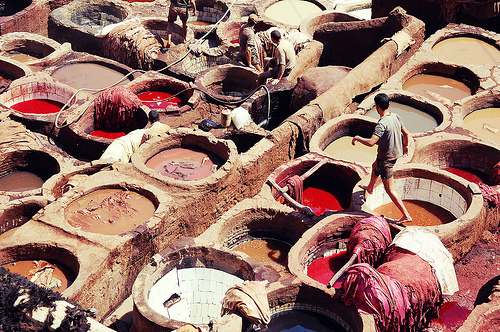One of the most heartbreaking examples of textile dyes’ impact on the environment is the denim industry around China’s Pearl River. This video about the industry is extremely eye-opening:
Finding Eco Alternatives
And denim is just one example. Conventional dyes are loaded with harsh chemicals, just like the ones used to turn denim navy blue. Whether those dyes end up polluting the water or not, some of those chemicals remain on the finished fabric. It’s not healthy for you to work with or for folks who are going to be using what you make. Depressing, right? But don’t despair just yet! You have a lot of power as a consumer, especially as a consumer of raw materials. Every time you choose fabrics from small producers colored with plant-based dyes, it makes a difference. When you opt to make your own non-toxic mix and dye your own fabric, it makes a difference. Many makers of organic fabrics use vegetable based dyes in their process, but it’s probably not a good idea to assume. You can always contact the manufacturer and ask about their dye process. In Europe, you can keep your eye out for fabrics certified with the Oeko-Tex Standard 1000. According to their website: The Oeko-Tex Standard 100 tests finished fabrics for residual chemicals to ensure that they are safe for consumers. The Standard 1000 takes it a step further, looking at the entire process and its impact on the environment. I couldn’t dig up any U.S. standards, though. If anyone knows of a legit certification program for textile dyes in the U.S., I’d love to hear about it! [Image Credit: Creative Commons photo by anasantos]
